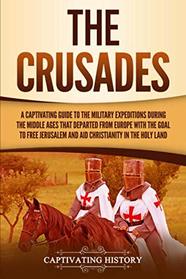This is a great explanation of the development of quasi-states after the fall of the Holy Roman Empire and why they fought constantly in the Early Middle Ages. Being defeated by a more powerful foe did not automatically mean destruction; rather, the defeated kept his rent-producing farmers and lands and just sent tribute to the winner. He also had to promise to aide his new lord with military service when so ordered.
The Crusades offered knights and nobles a way to tap into the riches of areas that were not in the European feudal system. I had no idea the Crusades took place over 3 centuries! The author took the time to show how the successes and failures happened in each of the Crusades. It would have been helpful to have had a map (or two) showing the major areas discussed: Antioch, Acre, Aleppo, Damascus, Jerusalem, etc. It would also have been helpful to have had a map of Europe, showing how the Crusaders traveled to Jerusalem.
I've read several books and eBooks about the Crusades, but this product is the most clear and concise explanation so far.
The Crusades offered knights and nobles a way to tap into the riches of areas that were not in the European feudal system. I had no idea the Crusades took place over 3 centuries! The author took the time to show how the successes and failures happened in each of the Crusades. It would have been helpful to have had a map (or two) showing the major areas discussed: Antioch, Acre, Aleppo, Damascus, Jerusalem, etc. It would also have been helpful to have had a map of Europe, showing how the Crusaders traveled to Jerusalem.
I've read several books and eBooks about the Crusades, but this product is the most clear and concise explanation so far.




